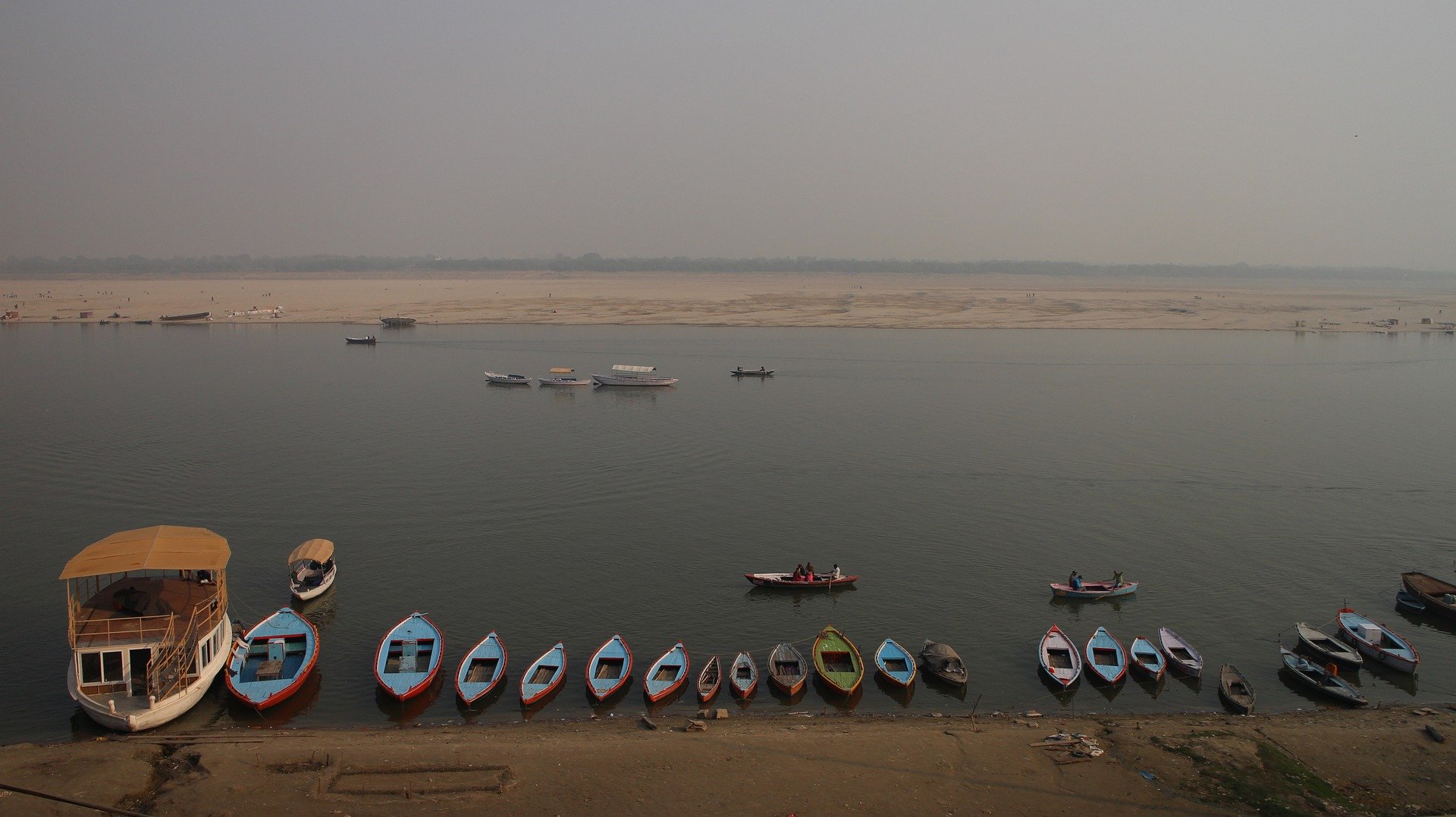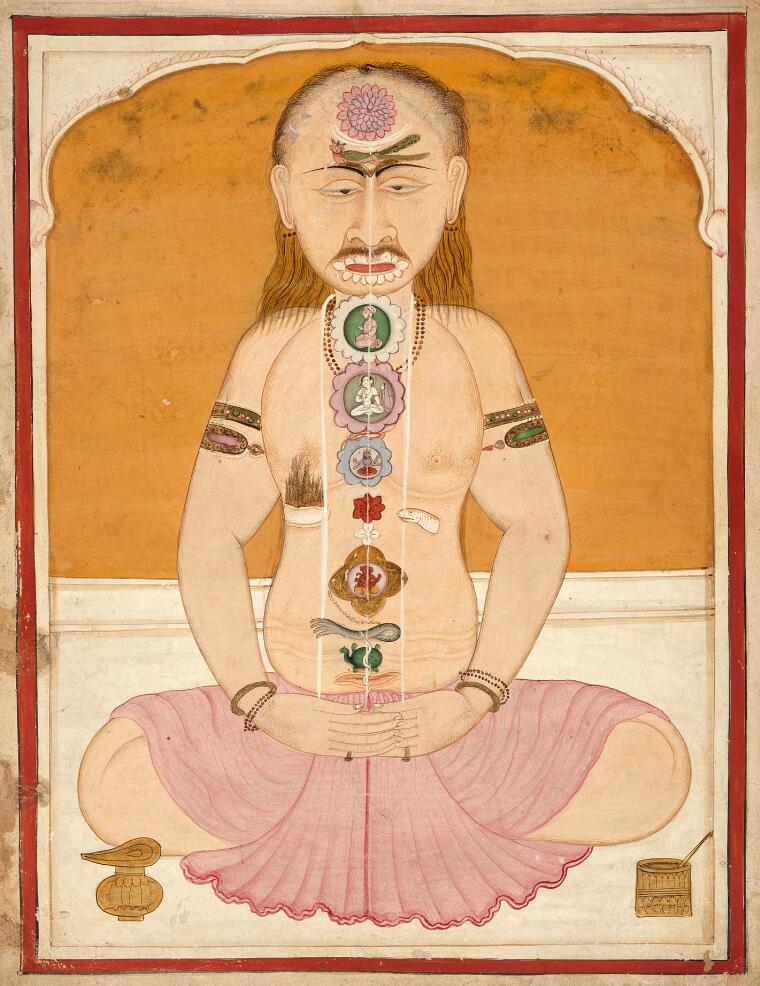Kundalini Yoga: An inner pilgrimage through the 7 spiritual centers
By Devendra Narayan, PhD.

Image credit: Vector Stock.
- Kundalini yoga is a practical science of purification, spiritual growth and enlightenment.
- Waking the sleeping Kundalini shakti at the base of the spine and arousing it through the 7 chakras forms the path and practice of Kundalini yoga.
- Several Kundalini yoga schools exist today, with practices and teachings that have been refined, adapted and sometimes distorted from the original, spiritual teachings.
A popular image of modern yoga is that of vibrant hue-colored Chakras superimposed on a human figure sitting in a lotus posture. Although these images are beautiful and intriguing, modern yoga practitioners should recognize that they are not necessarily authentic representations of an ancient practice.
Chakras are a part of Kundalini yoga, an advanced and practical science of purification, spiritual growth and enlightenment rather than perceived as a means to ecstasy and new experiences.
The modern, western understanding of Kundalini yoga derives largely from a book written in 1967 by Gopi Krishna [1], in which he describes his marvelous and often harrowing experiences with Kundalini awakening. Gopi Krishna's Kundalini account gained popularity in America because of the similar experiences with the psychedelic movement of the 1960s. Perhaps this is why many practitioners turned to Kundalini Yoga to experience the bliss and ecstasy as psychedelics, but without ingesting them.
Several Kundalini yoga schools exist today, with practices and teachings that have been refined, adapted, modified, and sometimes distorted from the original, spiritual teachings. This does not imply that these derivative teachings are not beneficial; on the contrary, they have led to Kundalini yoga becoming widely accepted around the world. However, as Kundalini and other forms of yoga continue to grow, the yoga community has a responsibility to ensure that derivative teachings are aligned with the path and practice of yoga.
With that in mind, the aim of this article is to shed light on Kundalini yoga as described in the yoga Upanishads and the 16th century text Sat Chakra Nirupana.
What is Kundalini Yoga?
‘Kundalini yoga is an inner pilgrimage’ - Swami Tadatmananda [2]
In India, there are many holy cities that have been visited by countless pilgrims for thousands of years. Prior to trains, cars, and airplanes, pilgrims had to walk for days and months to reach these holy cities. Despite their long and arduous journey, the pilgrimage brought them joy, peace, and liberation. To this day, the tradition continues and is not exclusive to the Indian subcontinent. There are similar practices across cultures and throughout the world.
In ancient India, the Rishis visualized an inner pilgrimage through inner holy cities located along the length of the spine, which they called the seven Chakras (wheels). According to the yoga Upanishads, the seven Chakras represented the seven holy cities of India [3].
Muladhara = Haridwar
Swadhisthana = Kanchipuram
Manipura = Ayodhya
Anahata = Mathura
Vishuddhi = Ujjain
Ajna = Kashi
Sahasrara = Dwarka

The holy Ganga river in Banaras, India. (Image credit: Webbituote, Pixabay)
Next, the Rishis consecrated one or more deities at each Chakra for the practitioner to worship or meditation upon. Apart from the deities the rishis also visualized elements that are sacred to a traditional pooja (worship) in vedic and Hindu traditions, including
Tattva (elements)
Varna (sounds and vibrations)
Padmas (lotus flower)
Dalas (petals of a lotus flower)
Rangas (colors)
Vahanas (animals) and
Yantras (symbols)
A mandala made of colorful grains during a sacred pooja. (Image credit: Devendra Narayan)
That means, each Chakra is a holy city. Upon meditating on each Chakra along the spinal column and head, the practitioner receives a complete experience of an inner pilgrimage, bringing joy and inner peace.
This pilgrimage through the chakras became the path and the practice of Kundalini yoga.
What is the purpose of Kundalini Yoga?
Chakras are connected to subtle energy channels called Nadis, and together, they form the foundation of a Kundalini yoga practice. In their descriptions of Kundalini yoga, the Rishis spoke of a dormant energy at the base of the spine known as Kundalini Shakti. This energy is symbolized as a serpent.
Why a serpent?
I am not certain of the exact reasons but here I offer a few suggestions:
- The human spine, which is a physical container for subtle Chakras, resembles a serpent.
- Snakes can shred their skin, symbolizing freedom from worldly attachments to attain spiritual rebirth.
- When aroused, a king Cobra commands respect and creates a magnificent display of power, and grace.
Kundalini yoga seeks to awaken this sleeping serpent energy through
Postures (Yoga asanas)
Muscle contractions (Bandhas)
Hand postures (Mudras)
Breathwork (Pranayama) and
Chanting (Mantras).

Image: Tantrika painting, Sanskrit MS 511. Credit: Wellcome Collection. Attribution 4.0 International (CC BY 4.0)
Practices in Kundalini yoga, which use the aforementioned tools are created to arouse and raise the dormant Kundalini Shakti from the base of the spine (Muladhara Chakra) to the crown of the head (Sahasrara Chakra), traveling through the nadis and piercing through all energy centers in between. In the next several articles, I will systematically explore each Chakra, their deities, colors, sounds, symbols and how to meditate on these inner pilgrimages of the subtle body for spiritual growth.
About the Author
Devendra Narayan is a scientist, yoga teacher, breathworker, scholar and founder of Cultivate Prana Academy. Cultivate Prana's mission is to empower modern day healers through education that integrates ancient wisdom and modern science.
Sources:
[1] Kundalini: The Evolutionary Energy in Man by Gopi Krishna (1967) Shambhala.
[2] Sections of this article were inspired by a film on Kundalini Yoga by Swami Tadatmananda.
[3] The 7 sacred cities.
-------
Copyright 2021 Cultivate Prana. All rights reserved.


